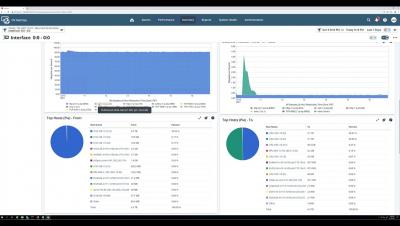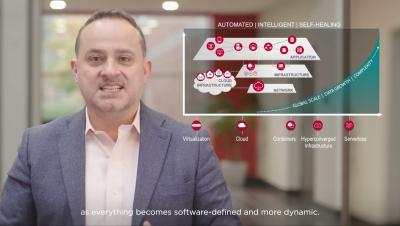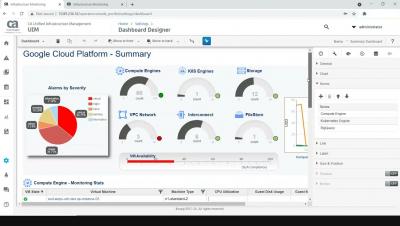Operations | Monitoring | ITSM | DevOps | Cloud
December 2021
What is the Purpose of Observability? In a Word, Innovation
Asking an IT engineer or SRE to define the purpose of observability is kind of like asking someone to explain the purpose of life: There are lots of different opinions out there, and no way of proving any of them right or wrong. You could argue that observability is just a buzzword that refers to what used to be called monitoring.
Broadcom Software Agile Operations Division Overview
Anomaly Detection
IT Operations has a wide spectrum of roles and responsibilities. The positions range from level 1 (L1) operators to Site Reliability Engineers (SREs) and everything in between. L1 operators, for example, are (often) almost exclusively reactive. They feed off the constant stream of incidents reported by clients and events that are reported by monitoring and alerting systems. This is in contrast to SREs, who work at the other end of the spectrum.
What's New with DX Unified Infrastructure Management 20.4
DX Unified Infrastructure Management (DX UIM) enables comprehensive infrastructure observability. The solution delivers comprehensive coverage, modern administrative and operator consoles, zero-touch configuration, advanced alarm management, and more. This solution provides a unified, data-driven approach to infrastructure management. With the solution, your teams can proactively and efficiently manage all your digital ecosystems, including private and public clouds.
Enterprise IT Dashboards
Interpreting data and making fast decisions is critical for any leader in today's business world. But how is it done? Everyone remembers the old way of doing things where analysts would manually crunch the numbers and give a final output. This business intelligence would be presented to their boss, and decisions would be made. This batch way of running numbers and presenting them is not sustainable due to the massive amount of manual effort involved to recompile datasets and present them properly.
DX UIM 20.4: Performance Reports Designer
DX UIM 20.4: Google Cloud Platform Dashboard
Migrating to DX APM FAQs
Migrating to Broadcom’s next-generation DX APM will provide you with the benefits of a modern architecture, high scalability, and comprehensive observability. With its advanced capabilities, the platform can support your organization’s monitoring needs long into the future. For your convenience, below is a summary of frequently asked questions and answers on migrating to DX APM.
How Better Collaboration and Planning Drive a Superior Digital Experience
An outstanding customer experience is one that keeps customers coming back, while spreading the word about their experience. Your applications are the heartbeat of that service delivery experience for both customers and other end users. When the experience wows, customer satisfaction grows.
On AI Adoption, IT Teams Lag Far Behind Security Teams. AIOps Can Help
Security operations teams and IT operations teams share a lot in common. They have both spent the past decade grappling with systems that grow more complex every year and figuring out ways to handle ever-larger volumes of data. They also both face pressure to identify and remediate problems as quickly as possible – ideally, in real time. And they are supposed to do it all without breaking the bank.
Broadcom and AppNeta: Better Together
Broadcom Software just announced the intention to acquire AppNeta, a pioneer in end-user experience over the internet. AppNeta will be integrated with DX NetOps, the network monitoring software portfolio within Broadcom’s Enterprise Software Division. The acquisition marks a key milestone in the DX NetOps vision to assure Network Observability Anywhere. AppNeta adds solutions, technologies, and people that will enable DX NetOps to deliver more value to our customers and partners.
Broadcom Announces Intent to Acquire AppNeta
Better Together - DX NetOps and AppNeta Enable a New Level of Network Visibility, Anywhere
Broadcom Software Announces Intent to Acquire AppNeta
As consumers, we are all intimately aware of our individual dependence on the internet. Now consider that dependency and apply it to the business-critical services that your company uses daily. Nearly overnight, companies are at the mercy of the internet, a network of public networks as nearly all employees work remotely and apps that were once hosted internally move to external SaaS providers.
AppNeta Brings Borderless Monitoring to Broadcom's NetOps Solution
It was at the turn of the millennium. I was one of the first engineers entrusted with the job of installing Network Computers, the thin client that Oracle had just introduced as an alternative to personal computers. During the process, as I described the benefits of network computing and three-tier architecture to customers, there was a palpable skepticism all around. Twenty years have passed since. Client-server gave way to three-tier architecture, and with the internet came cloud computing.
The Evolution of Broadcom APM: An Interview with James Kao
I recently talked with James Kao, Head of Engineering for APM at Broadcom. James leads the global development team to deliver the AIOps and application monitoring solutions that power the world's most successful businesses. He has had a diverse background in application development and monitoring across development, product management, and solution engineering roles over the last 20 years at both large enterprises and startups such as Oracle, ClearApp, and The Middleware Company.
The 5 Key Business Benefits of AIOps
It’s easy to see why developers and IT engineers should care about AIOps, which automates tasks (like incident remediation) that they would otherwise have to perform manually. But what does the business get out of AIOps? How do AIOps-powered tools help improve business outcomes? Those questions are critical to answer for any organization considering an investment in AIOps solutions.
Domain-Centric vs. Domain-Agnostic AIOps: What to Use When
AIOps platforms fall into two main categories: domain-centric and domain-agnostic solutions. What are the differences between domain-centric and domain-agnostic AIOps, and why should you choose one type of solution or the other? Read on for guidance on understanding the respective pros and cons of domain-centric and domain-agnostic AIOps.








